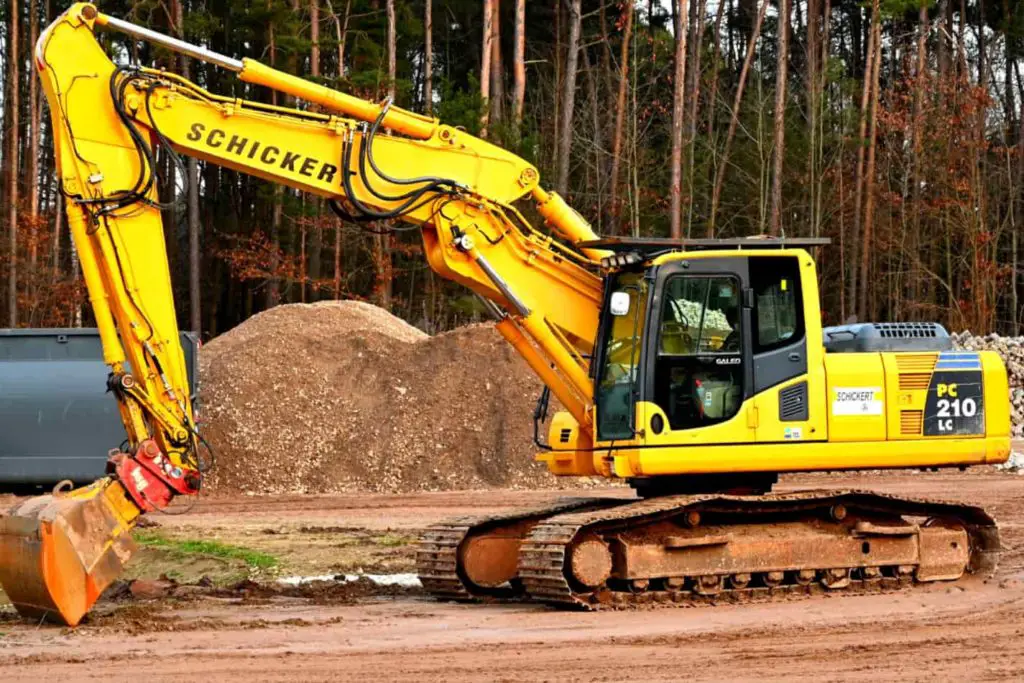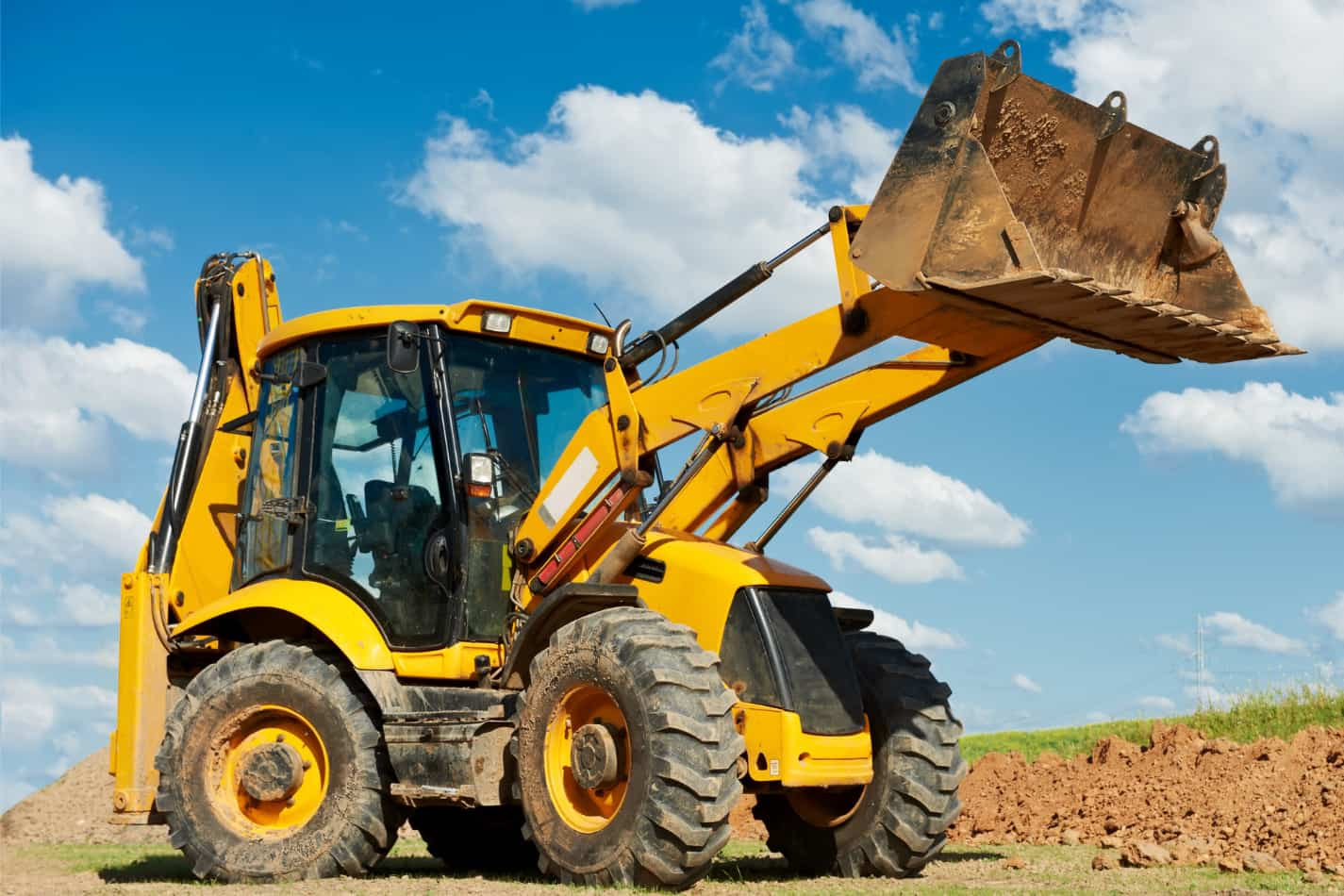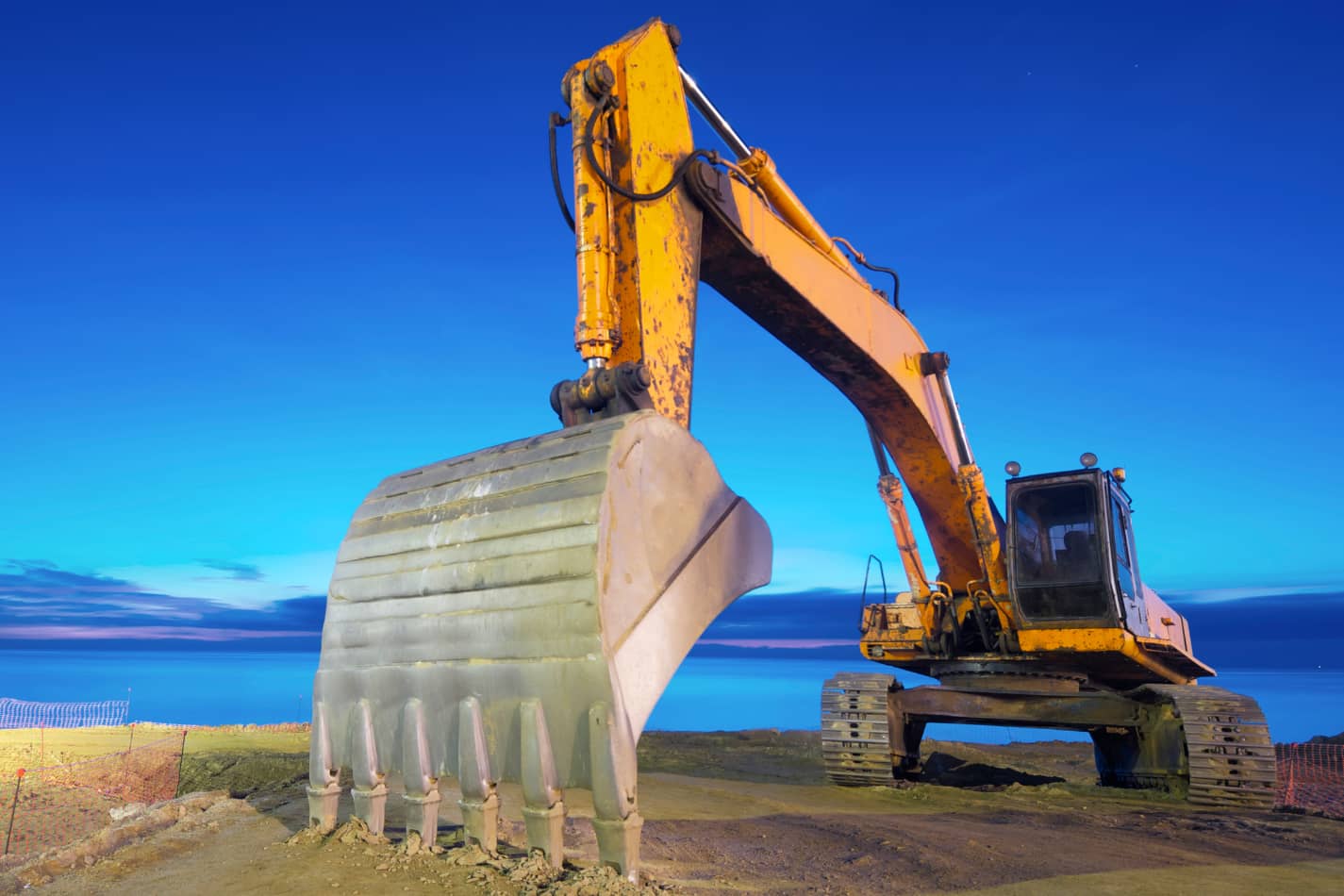Having a backhoe can be a great investment, but if you aren’t sure how big to get a trailer, you may be confused about which size to get.
In this article, we’ll go over some factors you should consider when choosing a trailer, such as the weight distribution and the size of the tractor.
In the end, you’ll be glad you took the time to learn more about the different options available.

Tractors
When determining the size of your trailer, make sure to consider the dimensions of the load. The dimensions of a backhoe are not included in the spec sheet.
In addition to the dimensions of the load, you’ll need to determine how much weight your trailer can carry. You may also want to consider your truck’s hauling capacity.
In many cases, the smallest trailer can still be large enough to transport your backhoe.
You’ll also want to consider the weight of the equipment you’re pulling. A 14-kilogram backhoe can weigh almost 6500 pounds.
A 22-kilogram trailer would be nearly twice as heavy as that. To put it in perspective, a 14-kilogram backhoe weighs more than 11500 pounds.
That’s almost twice as much weight as your small car, and it will be more than twice as heavy.
To ensure you’re carrying the right weight, check out the payload capacity of the trailer. An excavator weighs around 12,000 pounds, and a backhoe weighs about 1200.
The two are paired with a 7,000-lb trailer, so it’s easy to see why a ten-kilo capacity trailer is the best option. This way, you won’t have to worry about overloading the trailer.
You can even ask the manufacturer for information about the payload capacity of the trailer.
Flatbed trailers
There are various types of flatbed trailers available for backhoes. They are built to be flexible and convenient and can be used for different jobs.
You should understand your needs and the capabilities of each flatbed trailer type to make the right choice.
Before you choose a flatbed trailer for backhoes, you should know more about its construction. Knowing what type of flatbed trailer is right for your work requires additional investment.
Another type of flatbed trailer is called a Maxi trailer. It comprises two separate trailers, with the lead trailer longer than the “pup” trailer.
The lead trailer is connected to the “pup” trailer using a secondary kingpin. This trailer type is capable of hauling up to 96,000 pounds of freight.
These trailers are generally the best choice for heavier freight. However, these types are less common.
Alum-Line manufactures gooseneck low-profile heavy equipment flatbed trailers. These trailers are built entirely of aluminum, giving them real weight savings advantages.
These trailers have built-in ramps and are compatible with most vehicles. There are four different types of flatbed trailers available.
If you are in the market for a flatbed trailer for the backhoe, consider purchasing one of these models.
If you need to move a backhoe from one location to another, you should consider buying a flatbed trailer. They are designed to carry oversize cargo and are easy to use.
They can haul equipment and heavy building materials. They are also an ideal solution for moving prefabricated homes.
You can even find flatbed trailers with replacement parts and the entire range. For a backhoe, you should know that the trailer can accommodate various heavy loads and will be easy to use.
Beaver tail design
Designed specifically for backhoes, the Beaver tail design can be adapted for various work conditions.
This design is suited for work sites with uneven terrain and varying degrees of inclination. It features massive tubular construction, welded wheel stop, spring-assisted ramps, integrated chain storage, and full-length conspicuity tape.
It is also beneficial for loading heavy equipment, reducing the break-over angle at the top of the beavertail.
What Size Auger Attachment Should I Choose for My Tractor?
When deciding on the appropriate size auger attachment for your tractor, consider the job requirements. Smaller augers (6-9 inches) are ideal for light-duty tasks like planting small trees or fence posts. Medium-sized options (12-18 inches) suit general drilling purposes, such as foundation holes. For heavy-duty digging, like large tree installations or drilling holes in rocky soil, opt for larger augers (24 inches or more). Match the auger attachment for tractor with the task at hand for optimal efficiency and performance.
What Factors Should I Consider When Deciding Between Renting or Buying Construction Equipment?
When faced with the decision of renting vs buying construction equipment, various factors come into play. Take into account the frequency of equipment usage, the duration of projects, and financial considerations. Assess the costs of rental versus ownership, maintenance expenses, potential resale value, and storage requirements. Consider these factors to make an informed choice between renting vs buying construction equipment.
Weight distribution on the trailer
One of the most important things you should look for when buying a trailer is weight distribution. If the weight distribution on a trailer is uneven, you can easily damage the wheels or the entire unit.
You can also skew the figures, so the weight is heavier in the center and lighter in the front and rear.
This will also help distribute weight evenly along the trailer’s length. If you’re unsure what weight distribution looks like, you can always consult a professional to learn how to load a trailer properly.
In general, you should place about 60 percent of the trailer’s weight in front of the axle and 40% of the weight in the rear. This will prevent sway and promote optimal driver control.
However, the proper distribution for a backhoe trailer varies from vehicle to vehicle. Here are some tips to consider when deciding on the proper weight distribution.
You can also consult the manufacturer’s manual to determine the right weight distribution for your backhoe trailer.
Towing a backhoe with a trailer should be done with care. The tongue weight should be ten to fifteen percent of the total trailer weight.
This way, you’ll have a smooth ride and the peace of mind that comes with it. You can also try using a WD hitch to tow the trailer. You won’t have to worry about the trailer swaying and fishtailing.
Besides using a trunnion hitch, you should also ensure that the trailer’s weight distribution is proper. The tongue weight should be about ten to fifteen percent heavier than the rest of the load, as the difference between the two is too big or too small.
If the weight distribution is incorrect, you could lose control of the trailer and even crash it. This will be a problem if you’re unfamiliar with trailer weight distribution.
Price
Many factors go into determining the price of a backhoe and trailer. The size, weight, and other accessories will all factor into the cost of renting a backhoe.
Some companies will rent a backhoe for as little as $100 per day or as much as $1,500 per week.
In addition, you should factor in insurance costs, which can add 10% to 15% to your rental cost. You may also have to pay delivery fees if you cannot transport the backhoe yourself.
When considering the cost of hiring a backhoe and trailer, you may want to consult with local contractors and hardware stores for recommendations.
Ensure that they are insured and check their references. Also, look for customer reviews and references before hiring a company to use your backhoe and trailer.
Once you’ve narrowed down your list of companies, it’s time to contact each one for a free estimate and to book your first backhoe rental.
In the United States, most backhoes weigh less than 30,000 pounds, so most states’ dimensional requirements won’t be a problem.
You’ll find that even the largest backhoes can fit onto a step-deck trailer. A step-deck trailer can hold up to 30,000 pounds and fits snugly inside a flatbed trailer.
If you need to haul more than a backhoe, consider a flatbed trailer or an RGN trailer. They are less expensive than step-deck trailers and more readily available.
Final Thoughts
Now that you know what size trailer you need and what features to look for, choosing the perfect trailer for your backhoe should be a breeze!
Remember to consider factors like size, weight capacity, and budget when making your decision. With a little research, you’ll be hitting the open road with your new trailer in no time!





